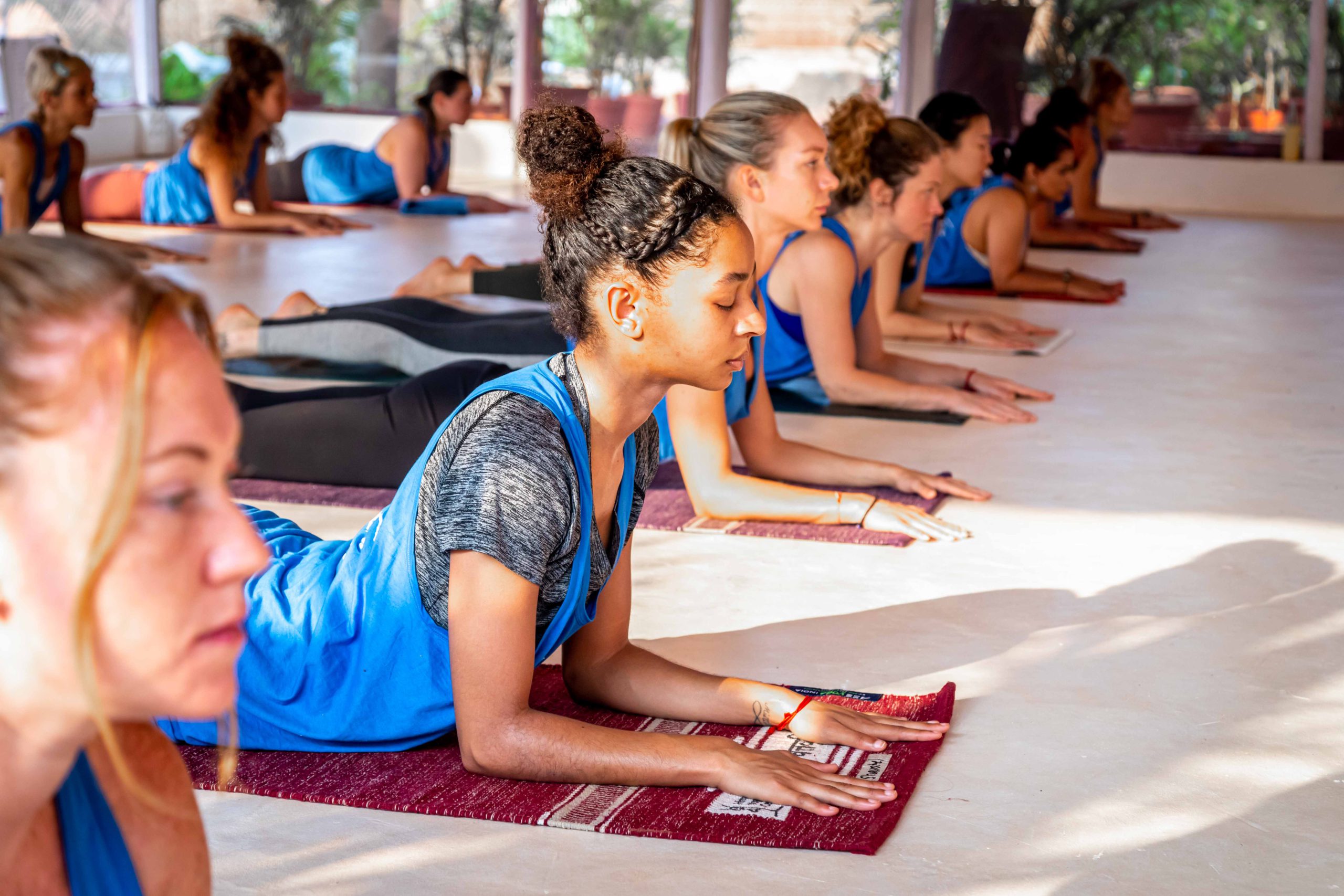
Imagine this: there is a pile up of stagnant traffic on the highway. Once the blockage of cars is cleared, you are able to drive again with flow and ease.
The same thing happens in Yin Yoga: this practice removes blockages and stagnancy within the nadis and meridians (the body’s channels) to create healthy flow and regulation.
In this blog we’ll share a brief overview of yin, the three main benefits, the differences between yin and yang, and the Yin principles you probably didn’t know
Let’s dive in!
Yin Yoga is the practice of slowing down, finding stillness, and healthily stressing the joints, tendons, ligaments, bones and fascia.
Yin Yoga is all about evoking the Yin qualities from Daoism and Traditional Chinese Medicine which are: slowness, stillness, fluidity, inwardness, and darkness. Essentially, the focus is on meditative qualities.
Which is the balance to Yang qualities such as active, doing, heat and movement.
Here’s the biggest misconception: Yiin is not opposed to yang. Yin is the balance to Yang. It’s the ideal compliment to an active, busy, Yang lifestyle, and Yang yoga practices— such as Ashtanga or Vinyasa. They balance and harmonize each other!
In Yin Yoga we apply Yin practices, which includes gentle pressure over a period of time to Yin tissues. Because Yin tissues are more plastic than elastic (muscles are yang and elastic), we must approach them slowly and give them TIME to respond.
Think of a plastic credit card, remembering here that Yin tissues have a plastic quality. If you started moving the credit card back and forth, quickly, in repetition, the plastic would snap. The same principle applies to the Yin tissues such as the joints, tendons, and ligaments.
Rather, you want to gently apply pressure to the plastic tissues over time, and they will slowly begin to restructure.
This moves us into the three main principles, or Tattvas, of Yin.
The 3 Principles/ Tattvas of Yin

While this blog provides a great outline to the theory of yin, the practice itself requires just that, practice!
Try out a Yin class locally, or online so that you can experience these benefits firsthand!
We will dive deeper into these principles and how to guide your students through this transformative style of yoga in our 100 hour Yin Yoga teacher training in India this December. We hope to see you there!
 Book A Call With Us
Book A Call With Us
Please wait while you are redirected to the right page...